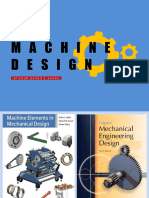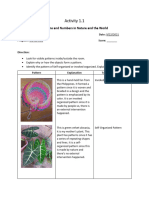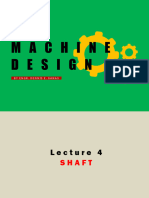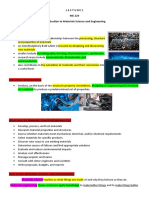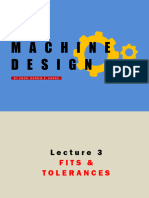0 ratings0% found this document useful (0 votes)
12 viewsWind Power Additional Notes
Wind Power Additional Notes
Uploaded by
ILEENVIRUSAn additional notes from a topic of powerplant that is about wind power
Copyright:
© All Rights Reserved
Available Formats
Download as PDF or read online from Scribd
Wind Power Additional Notes
Wind Power Additional Notes
Uploaded by
ILEENVIRUS0 ratings0% found this document useful (0 votes)
12 views4 pagesAn additional notes from a topic of powerplant that is about wind power
Original Title
Wind-Power-Additional-Notes (2)
Copyright
© © All Rights Reserved
Available Formats
PDF or read online from Scribd
Share this document
Did you find this document useful?
Is this content inappropriate?
An additional notes from a topic of powerplant that is about wind power
Copyright:
© All Rights Reserved
Available Formats
Download as PDF or read online from Scribd
Download as pdf
0 ratings0% found this document useful (0 votes)
12 views4 pagesWind Power Additional Notes
Wind Power Additional Notes
Uploaded by
ILEENVIRUSAn additional notes from a topic of powerplant that is about wind power
Copyright:
© All Rights Reserved
Available Formats
Download as PDF or read online from Scribd
Download as pdf
You are on page 1of 4
17.13 WIND POWER 713
Pips
qt P3*Pi
—\ 1 2 3 —
Throat
Figure 17.20 A schematic diagram illustrating a venturi flow-
measuring device.
velocity may be determined by knowing the pressure change and the flow rate,
determined from 1 = pAv. The throat contraction is small, so the pressure change is
also small. If the flow is compressible, the velocity change may be found as follows. If
adensity change occurs and must be accounted for, the equation po* = Ccan be used
to determine the functional relationship in the following integral.
The conservation of energy applied between state 1 and state 2 yields for isen-
tropic flow
hy + (ke), = hy + (key
¥a_vi, [?
272 + ; vdp
where dh = T ds + v dp = v dp for isentropic flow: For incompressible flow, v= C.
7 + 20,(D2 — py)? m/s (17.52a)
V2 = [v3 + 2geri(P2 — py)]"? ft/sec (17.52b)
The velocity, specific volume, and area being known, the mass flow rate may be
calculated.
There are other flow-measuring devices, such as orifices, but we will not discuss
these or the empirical coefficients that must be included in any study of flow-measur-
ing devices. Most fluid dynamics texts cover this area in greater detail.
17.13 WIND POWER
The use of wind power as a power source appears attractive for several reasons. First,
wind power is a renewable resource, for which the required technology has already
been developed. Second, no air, water, or thermal pollution is associated with it.
Third, weather modification due to wind utilization is negligible. The drawbacks to
wind-power utilization are relatively low efficiencies, high capital costs, noise, aes-
thetic problems, and reliability of equipment.
14
CHAPTER 17 / FLUID FLOW IN NOZZLES AND TURBOMACHINERY
Wind power is not a reliable energy source, the output being a function of the
wind velocity. Since wind-velocity fluctuations do not normally coincide with power-
requirement variations, most wind-power systems must include energy storage sys-
tems.
There are several types of wind-driven machines, operating on several different
principles. Although each type has its advantages, the onc type that stands out as the
most promising is the horizontal-axis, two-bladed propeller wind turbine, illustrated
in Figure 17.21.
Awind turbine should have the following characteristics: the ability to maintain
optimum alignment with the wind; a low starting torque; the ability to endure high
winds; and, if used to drive a generator, a high rotational speed.
The propeller windmill is almost always either a two- or three-bladed design; the
two-bladed design is more widely used because it is strong, simple, and less expensive.
The horizontal-axis windmill can be positioned so that the blades lie upwind or
downwind of the tower. The downwind design is usually preferred for larger ma-
chines, where a tail vane is not practical. On smaller models, a tail vane keeps the
blades pointing into the wind. Large windmills are usually steered by a pilot wind
vane, coupled to the drive gear, which operates to keep the windmill in constant
alignment with the wind. The pilot wind vane is more sensitive to wind shifts than is
Wind
—_
[PiPilot wind vane
Rotor axis
Figure 17.21 A two-bladed horizontal
windmill.
17.13 WIND POWER 715
Force on
windmill
Figure 17.22 Windmill propeller in a flow field.
the large windmill, At the cutout wind speed, the blades are turned edgewise to the
wind to protect the machine against damage due to high winds.
Let us develop the equations governing the windmill, Figure 17.22 illustrates a
windmill propeller located in a moving fluid.
When the fluid between planes | and 4 is isolated, the only force acting is that
exerted by the fluid on the propeller. The force acting on tne windmill is equal to the
pressure drop across the blades.
F=(p,—p3)A (17.53)
The force is also equal to
F= mv, —v4)
If we let v be the mean velocity across the blades and p be the air density,
F=pvA(vy — v4) (17.54)
Combining equations (17.53) and (17.54) yields
Pa Ps = pV(Yy — Va) (17.55)
Applying the first law to the flow between planes 1 and 2 yields
4, + Dd + $V} = ey + Pad + $V} (17.56)
The temperature is constant; hence u, = u, and
Pit Spit = Bo t+ 4p.vi (17.57a)
Similarly, for planes 3 and 4,
Pst $p3v3 = Da + $Dav4 (17.57)
Fora windmill operating in an unconfined fluid, pressures p, and p, are equal. Since
thisis so, equations (17.56) and (17.57) may be combined, on the assumption that the
density is constant and by virtue of the conservation of mass Vj = V2.
Pa Py = tAVi— vd) (17.58)
716
CHAPTER 17 / FLUID FLOW IN NOZZLES AND TURBOMACHINERY
Combining equations (17.55) and (17.58) yields
+
yom (17.59)
‘The mean velocity across the propeller blades is equal to the average of the upstream
and downstream velocities, measured at some distance from the windmill. Thus, the
velocity drop through the propeller is the same ahead as behind.
The windmill efficiency is the ratio of the power output to the total power
available in the airstream of area A and velocity v. This was derived in Chapter 3.
avd
Power available =
2 ya
Power output = inne
ait vot =v)
a 2v3
The maximum efficiency is found by differentiating 7 with respect to (v,/v,) and
setting the result equal to zero. Let
(17.60)
Me
‘
Then
2 — y2y2) -y
1 SE ey) (rn y’) (761)
dn
My 3y2 4 2y-1
dy mee
The only physically possible solution is y= }. This results in a value of v4/v; = 4,
which when substituted in equation (17.61) yields a maximum efficiency of 59.3%.
Thisis the maximum percentage of energy that can be used from the available energy,
the inlet wind’s kinetic energy.
4 ENERGY TRANSFER IN A TURBOMACHINE
The word turbomachine is derived from two Latin words, turbo, a spinning object,
and machina, a solid device. If these are combined, the result is a “machine that spins
or rotates.” The rotating portion, or rotor, interacts with the fluid that encompasses it.
A turbomachine is, therefore, a device that imparts energy to (does work on) or
receives energy from (has work done by) a fluid. Sce Figure 17.23 for a simplified
sketch noting the rotor; fixed portion, or stator; and fluid flow direction. Thermody-
namically, the effect of the energy transfer is manifested as a change in the stagnation
enthalpy.
You might also like
- The Subtle Art of Not Giving a F*ck: A Counterintuitive Approach to Living a Good LifeFrom EverandThe Subtle Art of Not Giving a F*ck: A Counterintuitive Approach to Living a Good LifeRating: 4 out of 5 stars4/5 (5936)
- The Gifts of Imperfection: Let Go of Who You Think You're Supposed to Be and Embrace Who You AreFrom EverandThe Gifts of Imperfection: Let Go of Who You Think You're Supposed to Be and Embrace Who You AreRating: 4 out of 5 stars4/5 (1107)
- Never Split the Difference: Negotiating As If Your Life Depended On ItFrom EverandNever Split the Difference: Negotiating As If Your Life Depended On ItRating: 4.5 out of 5 stars4.5/5 (886)
- Grit: The Power of Passion and PerseveranceFrom EverandGrit: The Power of Passion and PerseveranceRating: 4 out of 5 stars4/5 (598)
- Hidden Figures: The American Dream and the Untold Story of the Black Women Mathematicians Who Helped Win the Space RaceFrom EverandHidden Figures: The American Dream and the Untold Story of the Black Women Mathematicians Who Helped Win the Space RaceRating: 4 out of 5 stars4/5 (925)
- Shoe Dog: A Memoir by the Creator of NikeFrom EverandShoe Dog: A Memoir by the Creator of NikeRating: 4.5 out of 5 stars4.5/5 (545)
- The Hard Thing About Hard Things: Building a Business When There Are No Easy AnswersFrom EverandThe Hard Thing About Hard Things: Building a Business When There Are No Easy AnswersRating: 4.5 out of 5 stars4.5/5 (353)
- Elon Musk: Tesla, SpaceX, and the Quest for a Fantastic FutureFrom EverandElon Musk: Tesla, SpaceX, and the Quest for a Fantastic FutureRating: 4.5 out of 5 stars4.5/5 (476)
- Her Body and Other Parties: StoriesFrom EverandHer Body and Other Parties: StoriesRating: 4 out of 5 stars4/5 (831)
- The Emperor of All Maladies: A Biography of CancerFrom EverandThe Emperor of All Maladies: A Biography of CancerRating: 4.5 out of 5 stars4.5/5 (274)
- The World Is Flat 3.0: A Brief History of the Twenty-first CenturyFrom EverandThe World Is Flat 3.0: A Brief History of the Twenty-first CenturyRating: 3.5 out of 5 stars3.5/5 (2272)
- The Little Book of Hygge: Danish Secrets to Happy LivingFrom EverandThe Little Book of Hygge: Danish Secrets to Happy LivingRating: 3.5 out of 5 stars3.5/5 (419)
- The Yellow House: A Memoir (2019 National Book Award Winner)From EverandThe Yellow House: A Memoir (2019 National Book Award Winner)Rating: 4 out of 5 stars4/5 (99)
- Devil in the Grove: Thurgood Marshall, the Groveland Boys, and the Dawn of a New AmericaFrom EverandDevil in the Grove: Thurgood Marshall, the Groveland Boys, and the Dawn of a New AmericaRating: 4.5 out of 5 stars4.5/5 (270)
- The Sympathizer: A Novel (Pulitzer Prize for Fiction)From EverandThe Sympathizer: A Novel (Pulitzer Prize for Fiction)Rating: 4.5 out of 5 stars4.5/5 (122)
- Team of Rivals: The Political Genius of Abraham LincolnFrom EverandTeam of Rivals: The Political Genius of Abraham LincolnRating: 4.5 out of 5 stars4.5/5 (235)
- A Heartbreaking Work Of Staggering Genius: A Memoir Based on a True StoryFrom EverandA Heartbreaking Work Of Staggering Genius: A Memoir Based on a True StoryRating: 3.5 out of 5 stars3.5/5 (232)
- On Fire: The (Burning) Case for a Green New DealFrom EverandOn Fire: The (Burning) Case for a Green New DealRating: 4 out of 5 stars4/5 (75)
- The Unwinding: An Inner History of the New AmericaFrom EverandThe Unwinding: An Inner History of the New AmericaRating: 4 out of 5 stars4/5 (45)
- Me414 Lecture 7 Power ScrewsDocument30 pagesMe414 Lecture 7 Power ScrewsILEENVIRUSNo ratings yet
- Module 7 VolunteerismDocument19 pagesModule 7 VolunteerismILEENVIRUSNo ratings yet
- Me414 Lecture 4b ShaftDocument16 pagesMe414 Lecture 4b ShaftILEENVIRUSNo ratings yet
- CH 6 - Thermochemistry - Notes - KeyDocument31 pagesCH 6 - Thermochemistry - Notes - KeyILEENVIRUSNo ratings yet
- Topic 7 Geothermal Power PlantDocument5 pagesTopic 7 Geothermal Power PlantILEENVIRUSNo ratings yet
- Lesson 3 ArtAppDocument9 pagesLesson 3 ArtAppILEENVIRUSNo ratings yet
- Steam Power PlantsDocument73 pagesSteam Power PlantsILEENVIRUS100% (1)
- Topic 4 Fuels and Combustion Sample ProblemsDocument25 pagesTopic 4 Fuels and Combustion Sample ProblemsILEENVIRUSNo ratings yet
- Me414 Lecture 1 Analysis of Simple StressesDocument19 pagesMe414 Lecture 1 Analysis of Simple StressesILEENVIRUSNo ratings yet
- MMW Act 1.1-1.3Document5 pagesMMW Act 1.1-1.3ILEENVIRUSNo ratings yet
- Game 2Document3 pagesGame 2ILEENVIRUSNo ratings yet
- Simulation and Study of Shell and Tube Type Heat EDocument9 pagesSimulation and Study of Shell and Tube Type Heat EILEENVIRUSNo ratings yet
- Me414 Lecture 4 ShaftDocument14 pagesMe414 Lecture 4 ShaftILEENVIRUSNo ratings yet
- Matsci Midterm ReviewerDocument27 pagesMatsci Midterm ReviewerILEENVIRUSNo ratings yet
- Cam and FollowerDocument12 pagesCam and FollowerILEENVIRUSNo ratings yet
- Module - 5 - Python - Algorithm DevelopmentDocument35 pagesModule - 5 - Python - Algorithm DevelopmentILEENVIRUSNo ratings yet
- Me414 Lecture 3 Fits and TolerancesDocument32 pagesMe414 Lecture 3 Fits and TolerancesILEENVIRUSNo ratings yet
- ES106 - Module 8-9Document16 pagesES106 - Module 8-9ILEENVIRUSNo ratings yet
- Heat Transfer ConductionDocument3 pagesHeat Transfer ConductionILEENVIRUSNo ratings yet
- Lecture 9 Engg. Economy Comparing AlternativesDocument13 pagesLecture 9 Engg. Economy Comparing AlternativesILEENVIRUSNo ratings yet
- Chapter 4 Conic SectionsDocument8 pagesChapter 4 Conic SectionsILEENVIRUSNo ratings yet
















































